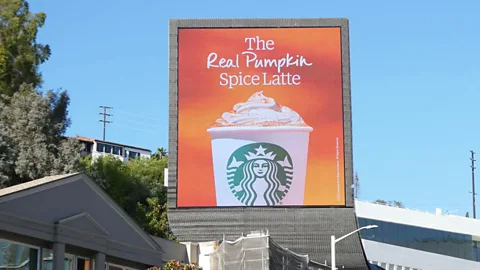There are various contenders for the crown (including, apparently, the singer Tori Amos), but the Pumpkin Spice Latte is widely attributed to Starbucks. The intentions were pure; to create the chain’s first autumnal drink. And the formula was simple: espresso and steamed milk sluiced with pumpkin spice sauce (later, real pumpkin puree), then dolloped with whipped cream and pumpkin pie spice topping.
 AlamyThe Pumpkin Spice Latte was invented in 2003 by Starbucks and the US hasn’t looked back since (Credit: Alamy)
AlamyThe Pumpkin Spice Latte was invented in 2003 by Starbucks and the US hasn’t looked back since (Credit: Alamy)
“From a consumer psychology standpoint, pumpkin spice works because it tastes like a feeling,” says Helen Chun, Professor of global marketing at Cornell University. “Starbucks tied it to warm emotional associations – cosiness, nostalgia, family gatherings – and then offered it only for a limited time, which builds anticipation and desire.”
Matthew Philp, associate professor of marketing at Toronto Metropolitan University, echoes the sentiment: “They could have called it ‘Pumpkin Pie Latte’ or ‘Thanksgiving Latte’ but something about ‘Pumpkin Spice’ suggests a sophistication and adds a stickiness point that people immediately understood, even though it was not really a term before Starbucks.”
There may even be a scientific reason for its success, adds Gavin: “Compounds like cinnamaldehyde in cinnamon, gingerol in ginger and eugenol in cloves activate TRPV1 receptors, which sense gentle heat and create a mild warming sensation that feels cosy and comforting.” When added to fatty substances such as cream, butter or milk, the flavours of the spices are enhanced. “That’s why pumpkin spice tastes especially rich and rounded in creamy desserts, pie fillings and lattes.”



Dining and Cooking